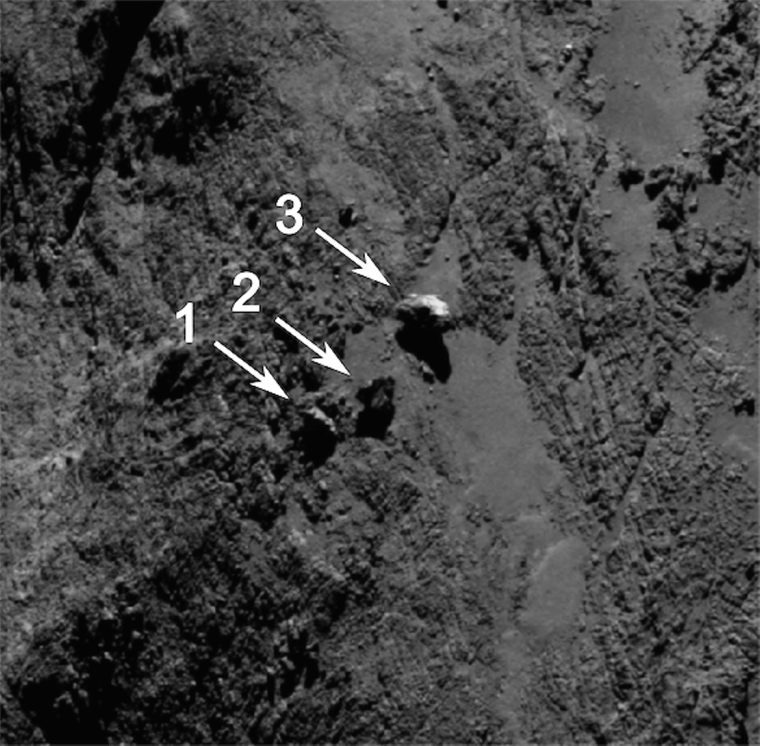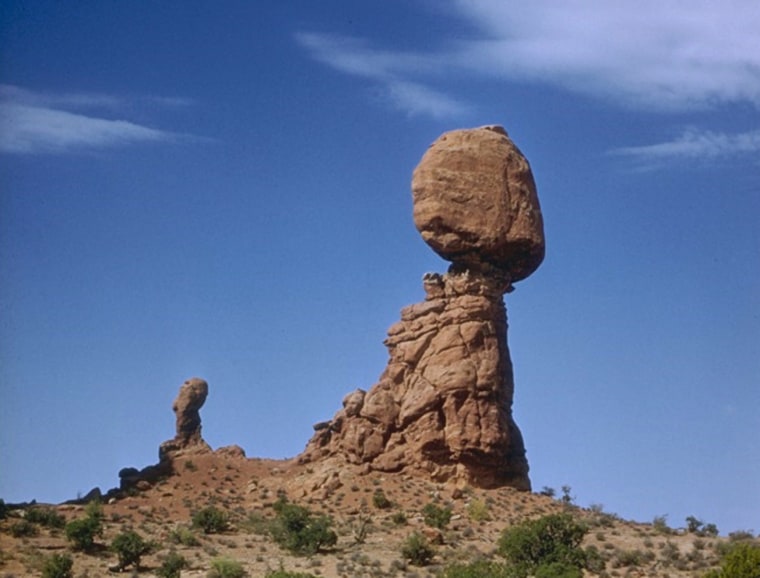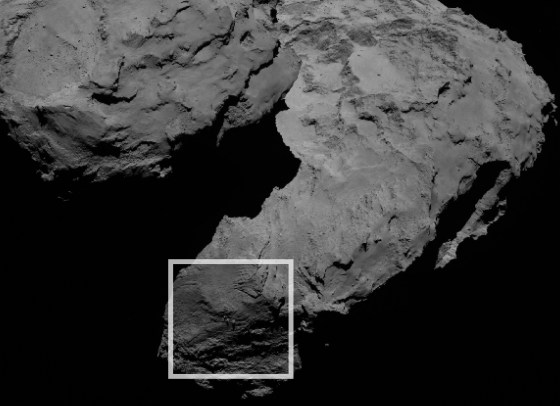Three rocks on Comet 67P/Churyumov-Gerasimenko seem to be balanced on their tiptoes in a cosmic pas de trois, as seen in images sent back by the European Space Agency's Rosetta spacecraft.
One of the rocks measures 100 feet (30 meters) across, with its pointy end apparently perched on the rim of a small depression on the comet's surface.
Such balancing rocks are set into place naturally on Earth — either because they're pushed into position by glaciers, or because wind and water erode the ground beneath them while leaving the more resilient rock balanced on top.

"How this apparent balancing rock on Comet 67P/C-G was formed is not clear at this point," Holger Sierks, the principal investigator for Rosetta's OSIRIS camera, said in an image advisory issued Monday. The mission's scientists say cometary activity may have caused the boulders to roll into their seemingly precarious positions. The images were taken last August and September.
Churyumov-Gerasimenko is becoming more active as the comet nears the sun and warms up. Jets of dust and gas already have been seen rising from the surface. In the months ahead, Rosetta will be perfectly placed to watch the comet's transformation — and perhaps re-establish contact with the mission's hibernationg Philae lander as well.
Will the "Three Ballerinas" stay on their tiptoes as the comet rounds the sun, or will they tumble into the icy dirt? Stay tuned.


